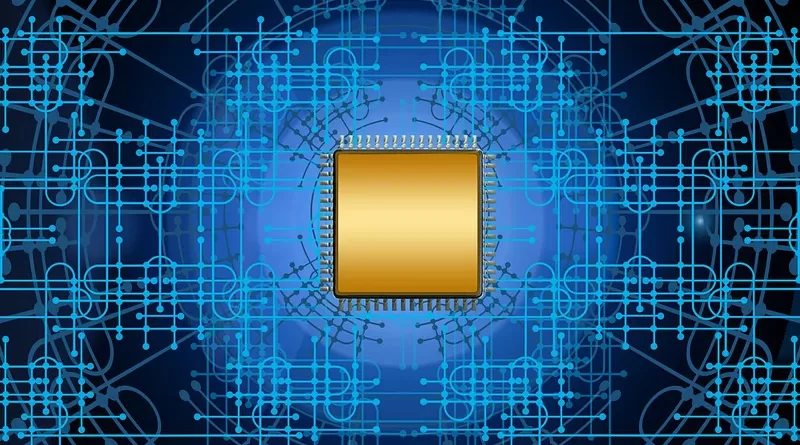Tian He*

The Biden administration has proposed an ambitious plan to build an alliance of techno-democracies to counter the rapid rise of China as a technology superpower. This strategy is quietly taking shape in Japan, South Korea and Taiwan, as US President Joe Biden sets out to rebuild the semiconductor sector in the United States.
While the United States still dominates chip design, many US firms have outsourced production. The country’s share of global chip manufacturing has fallen from 37 per cent in 1990 to 12 per cent today. Meanwhile, three East Asian semiconductor powerhouses — Japan, Taiwan and South Korea — contribute nearly 70 per cent of global semiconductor production. China is rapidly catching up with its neighbours and is on pace to become the world’s largest chip producer by 2030.
The erosion of the US manufacturing base has made the United States dangerously dependent on East Asia for its supply of semiconductors. The recent COVID-19 pandemic-induced chip shortage revealed long-standing vulnerabilities in US semiconductor supply chains. Given that semiconductors are essential for almost all electronic gadgets and emerging technologies, the Biden administration is naturally worried about the United States losing access to its supply.
Government and private sector initiatives are underway to boost US domestic production capability. On 8 June 2021, the Senate passed the US Innovation and Competition Act. The bill proposes US$52 billion to fund semiconductor research and development. Intel, the country’s largest chipmaker, has also unveiled the ‘IDM 2.0’ project that includes plans to enter the foundry business.
Unlike efforts to revive domestic production, formulating a techno-alliance strategy seems to offer a quicker solution to tackling the supply chain issue. In June, following its review of critical supply chains, the Biden administration proposed that the United States ‘engage with allies and partners’ to build a ‘resilient’ semiconductor supply chain. Biden’s alliance strategy will rely heavily on Japan, Taiwan and South Korea due to their strategic positions in the global supply chain.
The strategy’s primary goal is to lessen US dependence on Taiwan for the supply of leading-edge chips. There are indications that Japan will be central to this plan. In April, the US and Japanese governments agreed to create a decentralised semiconductor supply chain network where production does not rely on specific regions or on Taiwan.
Japan’s enthusiasm for Biden’s alliance strategy stems not only from its shared scepticism about the nature of China’s technological ambitions, but also from the opportunity to create a three-way supply network with Taiwan. This could provide a secure source of cutting-edge chips for Japan’s advanced electronics industry. Since 2020, Japan’s Ministry of Economy, Trade and Industry has been working to attract Taiwan Semiconductor Manufacturing Company (TSMC), the world’s largest semiconductor contractor to set up operations in Japan. The efforts have been successful, as TSMC is reportedly finalising plans to open its first Japanese chip plant as early as 2023.
There is little doubt that the Biden administration will incorporate Taiwan into its techno-alliance, especially as Taiwan’s status as the cornerstone of global chip production is unlikely to change in the foreseeable future. TSMC currently accounts for over 50 per cent of the global foundry market and over 90 per cent of advanced chip manufacturing. In President Biden’s first economic dialogue with Taiwanese President Tsai Ing-wen, US–Taiwan collaboration on chip supply chains was at the top of the agenda.
A major issue in maintaining a US–Taiwan semiconductor alliance is the US desire to on-shore semiconductor production. TSMC is now building a US$12 billion manufacturing facility in Arizona and considering the establishment of its first chip packaging plant in the United States. Biden’s efforts to relocate semiconductor production would inevitably clash with the Tsai government’s strategic agenda to enhance Taiwan’s core strength in the semiconductor sector.
There is also uncertainty surrounding Biden’s ability to involve South Korea, a semiconductor powerhouse that has pursued a balancing act between the United States and China. Biden has made special efforts to secure South Korea’s cooperation. In May, the two countries announced an agreement to deepen cooperation across a range of industries, including semiconductor production. Just a few days later, South Korean President Moon Jae-in’s meeting with Biden at the White House included discussions about semiconductor cooperation.
One potential problem with the strategy looms large. Technological collaboration between South Korea and Japan has historically been difficult. For example, a diplomatic dispute on the ‘comfort women’ issue led to a semiconductor supply chain crisis in 2019, as Japan blocked the exports of three chemicals essential to semiconductor manufacturing to South Korea.
Biden’s techno-alliance strategy will be crippled if either country repeats these sorts of measures. There has been limited progress towards trilateral cooperation, but the recent US–South Korea–Japan meeting predominantly focused on North Korea-related issues. The Biden administration still has its work cut out to make a techno-alliance a top priority within the trilateral relationship.
No comments:
Post a Comment